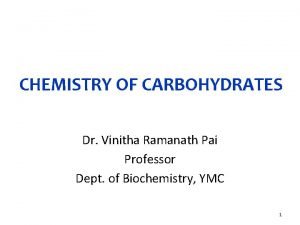Effect of Chitosan and Trehalose on Grape Resistance

- Slides: 1

Effect of Chitosan and Trehalose on Grape Resistance to Botrytis cinerea Chloé Brown Introduction Procedures Experimental Design Purpose Phytopathogens often effect plant growth after harvesting. In order to avoid the constant use of chemical pesticides to get rid of these germs there needs to be some kind of biological control treatment that is safe for humans. This project tested a grape’s resistance to grey mold disease which is a result from the exposure of Botrytis cinerea. Chitosan and Trehalose were tested as potential bio control agents. IV: Different Treatment Types Amount of Treatment None (Control) 40 µg/m. L 200 µg/m. L 500 µg/m. L Type of Treatment Chitosan 3 Trials Trehalose 3 Trials Dependent Variable: Grey mold growth (% covered) Constants: The type of table grapes being tested, the type of Botrytis cinerea being used, and the initial exposure amount Data Analysis Background Research Chitosan is the structural element present on the exoskeleton of crustaceans. Chitosan has been used to repetitively in past studies as a treatment or prevention treatment against multiple bacteria, on multiple plants such as the tomato plant (Liu, 2006). Trehalose is a natural substance often used in. It has been tested on and has been successful in inducing resistance to mold growth on wheat (Reignalt, 2000). Both have had successful results against other bacteria protecting other plants. Hypothesis Table grapes treated with chitosan will have less Botrytis cinerea growth than those treated with trehalose and not treated. The high treatment amount of chitosan will be the least effective against grey mold growth on the grapes. The medium treatment amount of chitosan will be more effective against grey mold growth on the grapes than the high treatment amount. The low treatment amount of chitosan will be more effective against grey mold growth on the grapes than both the high and medium amounts. There will be no significant different between the treatment amounts of chitosan and trehalose on the grey mold growth. Chitosan Trial 1 40 μg/ml Chitosan Trial 1 200 μg/ml Conclusion The grapes in the 200μg/ml trial for both chitosan and trehalose showed to have the most average percent mold coverage. The chitosan was observed to be the most successful in resulting in no grey mold growth on the treated grapes. The p-value for the entire data was 1. 00. This showed a statistically significant difference between the variables The low treatment amount showed to be successful having no grey mold growth in its trial. Chitosan Trial 3 500 μg/ml Chitosan Trial 1 500 μg/ml Trehalose Trial 1 40 μg/ml This hypothesis was supported after the experiment was complete. After the pictures of the grapes were analyzed using Image J software , it was shown that the chitosan was in fact more successful in preventing mold growth on the grapes. An ANOVA test was done. The results had a p-value of 1. 00 proving there wasn’t a statistically significant difference between variables. Although it wasn’t successful, trehalose still proves to be a good treatment, which can also serve as good replacement for pesticides. Because as the mold ages, the less effective it can be, that could’ve impacted results. Another limitation was that during the analysis of the photos taken in the experiment using Image J, the stem of the grapes was also included in the analysis. Further Research For further research, a test should be done on other plants and crops vulnerable to mold growth such as tomatoes. Also other treatments similar to those of trehalose and chitosan should be researched and tested due to the greatly positive results received from this experiment. Trehalose Trial 2 40 μg/ml

